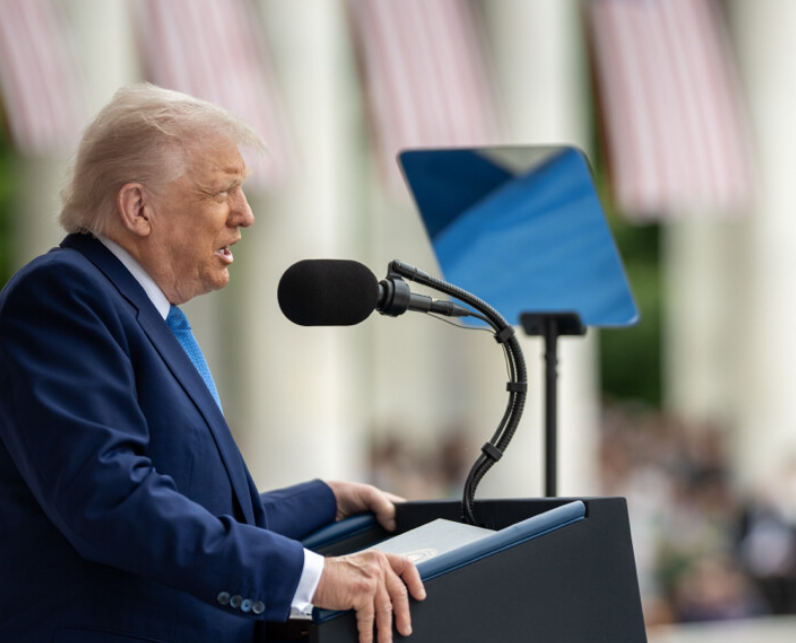Iran-Israel Ceasefire Deal: In a historic diplomatic breakthrough, US President Donald Trump brokered a ceasefire between Israel and Iran after 12 days of intense warfare. From secret attacks on Iran’s nuclear sites to real-time updates on Truth Social, this blog covers the full timeline of Trump’s high-stakes diplomacy that averted a prolonged Middle East war.
Iran-Israel Ceasefire Deal: President Trump’s Role In Ceasefire
In an extraordinary turn of events, the world witnessed a dramatic end to the 12-day war between Israel and Iran, as U.S. President Donald Trump brokered a bilateral ceasefire that has now officially taken effect. Israel declared that it had achieved all its objectives, having eliminated what it called the “dual existential threats” from Iran: its nuclear program and its missile arsenal. This unprecedented diplomatic breakthrough unfolded in real time, largely narrated by President Trump himself on his Truth Social network.
The conflict’s timeline reflects the intense pace of developments. It all began on June 16th, when President Trump abruptly left the Group of Seven (G7) Nations summit. At the time, he dismissed speculation that his departure was related to ceasefire negotiations between Israel and Iran, hinting only that he was working on “something much bigger.” The very next day, on June 17th, Trump dramatically escalated tensions by demanding Iran’s unconditional surrender.
In a series of posts, he claimed that U.S. intelligence knew the exact hiding location of Iran’s Supreme Leader Ayatollah Ali Khamenei. Trump described Khamenei as an “easy target” but added that they would not attempt to assassinate him.
On June 18th, Trump kept everyone guessing. When questioned about the possibility of U.S. military involvement alongside Israel, he cryptically responded, “I may do it, I may not do it. Nobody knows what I’m going to do.” He emphasized that Iran was in serious trouble but offered no clear indication of America’s next steps. The suspense continued to build.
June 19th, a federal holiday for Juneteenth, brought no new posts from Trump himself. However, his press secretary Caroline Leit held a briefing, quoting the President: “Based on the fact that there’s a substantial chance of negotiations that may or may not take place with Iran in the near future, I will make my decision whether or not to go within the next two weeks.” This statement only heightened global anticipation.
On June 20th, Trump convened his national security team for a high-level meeting. Again, there was complete silence on social media, leaving the international community in suspense. Then came the breakthrough.
In the early hours of June 21st, Trump made a stunning announcement: the U.S. had conducted a successful and massive military strike on three of Iran’s key nuclear sites — Natanz, Esfahan, and Fordo. Trump declared that the nuclear enrichment facilities had been “completely and totally obliterated.” He revealed that Fordo was hit with the “full payload of bombs” and that all U.S. aircraft returned safely. Trump repeatedly emphasized that the attacks were fully successful, dismissing any media reports to the contrary as “fake news.”
Later that day, Trump issued a strong warning to Iran: any retaliatory strikes against the United States would be met with an even greater show of force than what was already demonstrated. In one of his more provocative posts, he questioned the current Iranian regime’s capability to lead the country, suggesting that if the regime could not “make Iran great again,” perhaps regime change should be considered.
On June 22nd, Trump announced that Iran had responded to the U.S. strikes but described their response as “weak.” He thanked Iran for giving advance notice of their retaliation plans, which allowed both sides to minimize casualties and avoid further escalation. Following this, Trump surprised the world with a final, monumental update: both Israel and Iran had agreed to a complete and total ceasefire.
Trump emphasized that without this ceasefire, the war could have easily dragged on for years and devastated the entire Middle East. Ending his announcement on a deeply optimistic and unifying note, Trump wrote: “God bless Israel, God bless Iran, God bless the Middle East, God bless the United States of America, and God bless the world.”
The entire episode demonstrated not only the volatile nature of international conflicts but also the unique diplomatic style of President Trump, who leveraged his direct social media presence to communicate, negotiate, and ultimately broker a peace deal in real time.
As the world cautiously watches to see whether this ceasefire holds, this unprecedented series of events will likely be studied for years as a remarkable case of 21st-century diplomacy — driven not just in back rooms of diplomacy, but in the full view of the world online.
Disclaimer:
The content in this blog is based on public reports, official statements, and social media updates. While every effort has been made to present accurate and complete information, readers are advised to follow official government and international sources for the latest updates on this evolving situation. The views expressed do not reflect any official endorsement or political bias.

